
A clipper was a type of mid-19th-century merchant sailing vessel, designed for speed. Clippers were generally narrow for their length, small by later 19th-century standards, could carry limited bulk freight, and had a large total sail area. "Clipper" does not refer to a specific sailplan; clippers may be schooners, brigs, brigantines, etc., as well as full-rigged ships. Clippers were mostly constructed in British and American shipyards, although France, Brazil, the Netherlands, and other nations also produced some. Clippers sailed all over the world, primarily on the trade routes between the United Kingdom and China, in transatlantic trade, and on the New York-to-San Francisco route around Cape Horn during the California Gold Rush. Dutch clippers were built beginning in the 1850s for the tea trade and passenger service to Java.
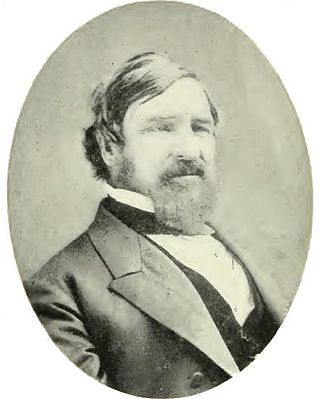
Nathaniel Brown Palmer was an American seal hunter, explorer, sailing captain, and ship designer. He gave his name to Palmer Land, Antarctica, which he explored in 1820 on his sloop Hero. He was born in Stonington, Connecticut, and was a descendant of Walter Palmer, one of the town's founders.
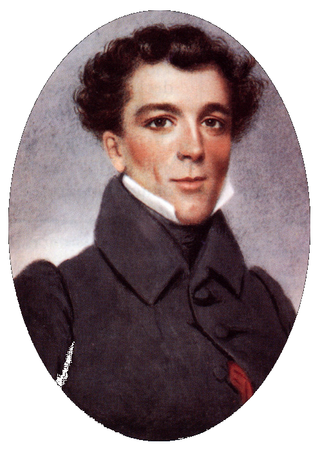
Captain Robert Bennet Forbes, was an American sea captain, China merchant and ship owner. He was active in ship construction, maritime safety, the opium trade, and charitable activities, including food aid to Ireland, which became known as America's first major disaster relief effort.

Lothair was a British clipper ship built by William Walker and launched in Rotherhithe, London, on 2 July 1870. After many years of service as a tea clipper, she was operated by merchants in Italy and Peru before being lost in 1910.

Taitsing was a famous British tea clipper.

Wu Bingjian, trading as "Houqua" and better known in the West as "Howqua" or "Howqua II", was a hong merchant in the Thirteen Factories, head of the E-wo hong and leader of the Canton Cohong. He was once the richest man in the world.

When launched in 1853, Great Republic was the largest wooden ship in the world. She shared this title with another American-built ship, the steamship Adriatic. She was also the largest full-rigged ship ever built in the United States. She was built by Donald McKay for trade on his own account to Australia.

Abiel Abbot Low was an American entrepreneur, businessman, trader and philanthropist who gained most of his fortune from the China trade, importing teas, porcelains, and silk, and building and operating a fleet of reputable clipper ships.

Sea Witch was an American clipper ship designed by naval architect John W. Griffiths for the China trading firm of Howland & Aspinwall. She was launched at Smith & Dimon in Manhattan on December 8, 1846.

Stag Hound was launched on December 7, 1850 in East Boston, Massachusetts. Designed by shipbuilder Donald McKay for the California trade, she was briefly the largest merchant ship in the world. She was in active service from 1851 until her total loss in 1861.

The N.B. Palmer was a clipper ship owned by A.A. Low & Brother which was active in the China trade.
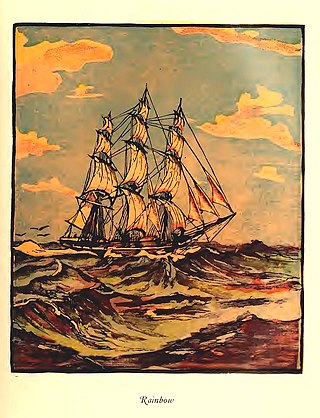
Rainbow, launched in New York in 1845 to sail in the China trade for the firm Howland & Aspinwall, was a clipper, a type of sailing vessel designed to sacrifice cargo capacity for speed.

Surprise was a California clipper built in East Boston in 1850. It initially rounded Cape Horn to California, but the vessel's owners, A. A. Low & Brother, soon found that the vessel performed well in Far Eastern waters. From that point onward the vessel spent much of her working life in the China trade, although the vessel also made three trips from the East Coast of the United States to California.

The Paul Jones was a Medford-built ship, launched in 1843, that brought the first cargo of ice to China.

The Memnon was the first clipper ship to arrive in San Francisco after the Gold Rush, and the only clipper to arrive in San Francisco before 1850. Built in 1848, she made record passages to San Francisco and to China, and sailed in the first clipper race around Cape Horn.

The SS Erl King was built at A and J Inglis, Pointhouse, Glasgow and launched in 1865 and owned by Robertson & Co London. She was designed as an Auxiliary Steam Ship - steam power would be used to supplement the propulsion from the sails, when there was no wind or if there was a light head wind. She was fitted with a propeller that could be lifted up when sailing, so as to reduce drag. The engine was not powerful enough to push the ship, with all the windage of standing rigging, directly into a strong headwind. Auxiliary steam power had the advantage of allowing this vessel to use the Suez Canal when it opened in 1869 - something which was not possible for sailing vessels.

Lord of the Isles was the first iron-hulled tea clipper, built in Greenock in 1853. She served in the tea trade until 1862, and also made voyages to Australia. She is known for a record passage between Greenock and Shanghai, and for her close finish in the 1856 Tea Race from China to England, docking in London just ten minutes before Maury. This race was the basis for the plot of a 1927 movie by Cecil B. DeMille The Yankee Clipper.
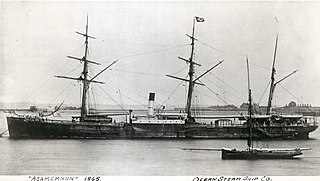
SS Agamemnon was one of the first successful long-distance merchant steamships. She was built in 1865 to trade between Britain and China, and competed with tea clippers before and after the opening of the Suez Canal in 1869. She brought together three improvements in steamship design: higher boiler pressure, an efficient and compact compound steam engine, and a hull form with modest power requirements.
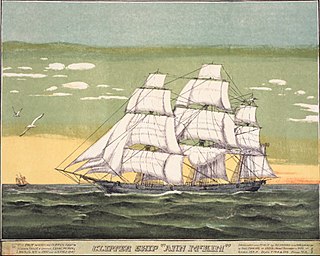
Ann McKim was one of the early true clipper ships, designed to meet the increasing demand for faster cargo transportation between the United States and China in the early 1840s. The opening of new Treaty ports in the East allowed American merchants greater access to trade with China, leading to the need for ships that could move cargo more quickly than traditional merchant ships. Ann McKim was one of the ships that had answered the demand in the early years and sailed between New York and China in 1840–1842, until newer and faster cargo-carriers, such as the nearly 600-ton clipper Houqua, the 598-ton China packet Helena, Witch of theWave, and Rainbow started dominating the shipping world of the US-China trade and Ann McKim was shifted back to the South American trade routes.




















